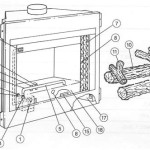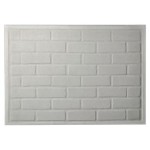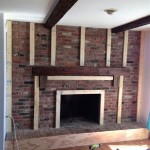Fireplace Flue Replacement: When and Why
A fireplace flue is a vital component of your home's heating system, serving as the pathway for smoke and combustion byproducts to safely vent outdoors. Over time, however, these flues can deteriorate due to various factors, compromising their ability to function effectively and posing potential safety risks. This article explores the reasons why fireplace flue replacement might be necessary, the signs of deterioration, and the process involved.
Signs Your Fireplace Flue Needs Replacing
Several indicators can signal that your fireplace flue is nearing the end of its lifespan and requires replacement. These include:
- Visible cracks or crumbling mortar: These damage points compromise the flue's structural integrity, allowing smoke and gases to escape into your home, leading to potential health hazards.
- Blockages and obstructions: Accumulation of creosote, soot, bird nests, or other debris can hinder smooth airflow, reducing ventilation efficiency and increasing the risk of chimney fires.
- Excessive creosote buildup: Creosote is a highly flammable substance deposited in flues during burning. Excessive buildup can lead to smoke backdraft, fire hazards, and reduced heating efficiency.
- Smoke or gas leaks into the home: If you notice smoke or gas escaping into your home during or after burning, it indicates a compromised flue and a potential safety hazard.
- Rusting or corrosion: Metal flues are susceptible to rusting and corrosion over time, especially in damp environments. These deteriorations can weaken the flue's structure and impact its efficiency.
- Water damage: Leaking roofs or faulty flashing can cause water to seep into the flue, leading to damage, corrosion, and potential mold growth.
- Old age: Even without obvious signs of deterioration, older flues, especially those constructed with outdated materials, may have reached the end of their service life and require replacement.
Ignoring these signs can lead to serious consequences, including fire hazards, carbon monoxide poisoning, and property damage. Consulting a professional chimney sweep or a qualified HVAC technician is crucial to assess the condition of your flue and determine if replacement is necessary.
Reasons for Fireplace Flue Replacement
The reasons for replacing a fireplace flue are multifaceted, encompassing safety concerns, functional limitations, and compliance with building codes.
Safety Concerns
Safety is a primary reason for replacing a damaged or worn-out flue. A compromised flue can allow smoke, gases, and embers to escape into the home, creating a serious fire hazard. Additionally, it can lead to carbon monoxide poisoning, a colorless, odorless, and deadly gas that can build up inside the home without warning. Replacing the flue ensures safe and efficient operation of your fireplace, minimizing the risk of these potential hazards.
Functional Limitations
Over time, a deteriorated flue can become less efficient in venting smoke and gases. This leads to reduced heating performance, increased fuel consumption, and potential smoke backdraft. Replacing the flue can restore optimal ventilation and improve the overall functionality of your fireplace.
Building Codes and Regulations
Building codes and regulations often mandate specific standards for fireplace flues, including material, size, and installation practices. If your existing flue does not meet these standards, it may require replacement to comply with local regulations.
Fireplace Flue Replacement Process
The process of replacing a fireplace flue typically involves several steps:
- Inspection and assessment: A professional chimney sweep or HVAC technician will thoroughly inspect your flue for damage, blockage, and compliance with current codes.
- Removal of the old flue: The existing flue will be carefully removed, taking precautions to avoid damage to surrounding structures.
- Installation of the new flue: A new flue, typically made of durable and fire-resistant materials, will be installed according to local building codes and manufacturers' specifications.
- Sealing and insulation: The new flue will be properly sealed and insulated to prevent leaks and ensure efficient ventilation.
- Final inspection and cleaning: Once installed, the new flue will be inspected for proper functionality and cleaned to remove any debris from the installation process.
The specific steps and materials used may vary depending on factors such as the type of fireplace, the existing flue material, and local building codes. It is crucial to engage a qualified and experienced professional for the replacement process to ensure a safe and effective outcome.
Investing in fireplace flue replacement is an essential step in maintaining the safety and efficiency of your home's heating system. By addressing potential issues early on, you can prevent costly repairs, minimize safety risks, and ensure the longevity and enjoyment of your fireplace for years to come.

What Is A Fireplace Chimney Flue Liner Full Service

Flueblocker Chimney Flue Fireplace Draft Stopper Herdwick Wool Damper Replacement 8 X 20 Com

Nicholas Chimney Sweeping Stove Fireplace Services Vienna Virginia

Flueblocker For 12 X Square Chimney Flue Replacement Fireplace Draft Stopper Com

Damper Repairs Replacement Yamhill County Chimney

Certified Heatshield Installer Flue Liner Repair Va

Chimney Dampers In Chicago Capital Corp

Chimney Lining Repair Systems Heatshield

Damper Plate Throat The Blog At Fireplacemall

Heatshield Relining Charlotte Nc Owens Chimney Systems
Related Posts








